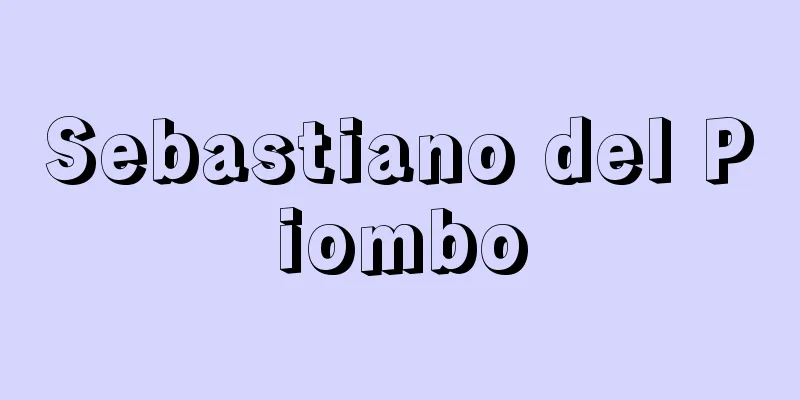Karate

|
It is a martial art that originated and has been passed down in the Ryukyu Kingdom and Okinawa Prefecture. As it spread throughout Japan, it inherited the spirit of Japanese martial arts, and the name changed to "karate," "karate," and "karate-do," and it was systematized. Because it is a martial art that effectively uses every part of the body, it has spread as a physical culture in competitions (sports), lifelong martial arts (self-defense and health techniques), and school martial arts (education). After the end of World War II, it spread around the world as "KARATE" and will be adopted as an official Olympic event at the Tokyo Olympics in 2020. In Okinawa Prefecture, where it originated, October 25th is "Karate Day." [Masatatsu Koyama December 13, 2019] Karate in the RyukyusThe Ryukyu/Okinawa period is divided into Old Ryukyu, Early Modern Ryukyu, Modern Okinawa, and Postwar Okinawa, unlike the Japanese period. The Old Ryukyu period was from the 14th century to the early 17th century (roughly the Muromachi to Edo period in Japan), so it is unreasonable to expect the origins of karate to date back to any time before that. The theory that Chinese martial arts may have originated from Chinese martial arts is that Chinese martial arts were introduced as part of the culture of Ryukyu through the "Thirty-six Naturalized Surnames (a group of naturalized Chinese)" and "through exchanges with military officials" during the period when Chinese cultural artifacts began to enter Ryukyu due to the tributary relationship with the Ming Dynasty (China). Additionally, the theory that the development of karate was promoted by two weapons bans imposed by the Satsuma domain, once during the reign of King Sho Shin (1477-1526) and once during the early modern Ryukyu period (1609-1879), has spread through the early writings of Funakoshi Gichin (1868-1957) and other sources, and is still supported by many people today. From the "name of the kata" that is the main source of the tradition, it is necessary to focus on Chinese martial arts as the source, but there is no established theory as to how the Ryukyuans adapted Chinese martial arts to Ryukyuan style, as there are no reliable documents. Regarding the policy of banning weapons, research after the Second World War has described how Shuri Castle had a standing army stationed there and was always on a state of war readiness, and the reading of the "Momourasoerankan no mei" (an inscription on the railing of the bridge in front of the main hall of Shuri Castle), which had been used as the basis until now, has been revised, so that the support for the policy of banning weapons is no longer supported, and it has been argued that the idea that this was the catalyst for the development of karate needs to be reconsidered. As for the "secret tradition of karate," its existence was known to the feudal lords of Satsuma and Higo at the latest in the 1700s, and it is expected that the theory on the tradition will be further verified and the discussion on the "origin" and "development" of hand and karate will progress. In the latter half of the early modern Ryukyu period, an 18th century historical document called "Oshima Hikki" from the Tosa domain tells of a "demonstration of kumiaijutsu" by a person called "Koushankun." There is no doubt that this document is a "valuable historical document for the spread of karate," but further study, including interpretation, is necessary. In the 19th century folklore book "Nan'to Zatsuwa," which records Amami Oshima, there are illustrations of young men training their fists with a training tool such as a straw mat, and of middle-aged men trying to hit their fists against a solid object. The illustration of the middle-aged man is accompanied by the notes "tsukukosu" and "totsukuro," which suggests the existence of bare-handed martial arts that were connected to "karate." In the Ryukyu Kingdom, the warrior class known as "samurai" were involved in karate and passed it down in the areas of martial arts (self-defense), culture (attainment), and performing arts (national affairs). Among the warriors known from this time are Toude Sakugawa (years of birth and death unknown; real name Sakugawa Kanga) and his disciple Matsumura Sokon (1809-1899; some books record him as "Sokon"). In addition to the warrior classes of Shuri and Kume, karate was also widespread among the people of Naha and Tomari. During the early modern Ryukyu period, the Ryukyu Kingdom was under the control of China, but was also ruled by the Satsuma Domain, and for many years it maintained a system of dual affiliation to both Japan and China. After the Meiji Restoration, the Ryukyu Kingdom's existence was shaken to its very core by Japan. This was the establishment of the Ryukyu Domain in 1872 (Meiji 5), and the Ryukyu Disposition (establishment of Okinawa Prefecture) in 1879. It was a tumultuous time within the Ryukyu Domain, with the Chinese faction (the Ganko Party) splitting into factions of China (the Enlightened Party) and Japan (the Enlightened Party), and until Japan's victory in the Sino-Japanese War, the survival of karate was in doubt. Karate, which had been passed down as a martial art for the education of the Ryukyu samurai and as a self-defense martial art for men crossing the sea, underwent a major transformation when Okinawa Prefecture was established. [Masatatsu Koyama December 13, 2019] Karate, Karate, Karate-doFollowing victories in the Sino-Japanese and Russo-Japanese wars, the value of martial arts education was reassessed, and in Okinawa Prefecture, where conscription was introduced later, karate suddenly became a martial art that attracted much attention. It was said that the well-trained physiques of Yabu Kentsu (1866-1937), who had volunteered for the military even before conscription, were the result of karate, and he quickly became famous. Thanks to the efforts of Itosu Anko (1831-1915), Yabu's teacher, and others, karate was introduced into school education in Okinawa Prefecture in the late 1890s. Jujutsu and swordsmanship were introduced in mainland Japan in the 1900s, and Okinawan karate became the forerunner of Japanese school martial arts. The method of passing down "te" that had been handed down during the Ryukyu period changed greatly. Martial arts that had been passed down from father to son or from master to disciple began to be taught in schools, and Itosu created the "Pin'an" kata to make the ancient kata suitable for school physical education. "Heian" is a physical exercise that uses the body equally on both sides, and Itosu wrote about the origins of karate, the mindset for practice, the meaning of the kata, and the educational value in the "Ten Commandments of Karate" and submitted them to Okinawa Prefecture. The introduction of karate to school martial arts would have a great impact on karate thereafter. In the process of teaching school personnel, karate masters representing Shuri and Naha, such as Asato Anko (1828-1914; there are various theories about his birth and death years) and Higaonna Kanryo (1853-1915), cooperated with Itosu, laying the foundation for karate to be recognized as a cultural value in Okinawa society. Okinawan karatejutsu, which was studied by junior high school students and normal school students who would later lead Okinawan society, saw the rise of Funakoshi Gichin (the same person as the aforementioned "Funakoshi Gichin"; "Funakoshi" is written as his name after he was renamed) and Miyagi Chojun (1888-1953) as successors to Itosu and Higaonna, and serious study meetings and promotional activities were held in Shuri and Naha. The rise of karate as a culture deepened the confidence of Okinawans, and the Taisho period, when discussions were held on the training and systematization of the next generation, marked the beginning of a period of karate's rapid growth. Funakoshi's transplantation of karate to the mainland in 1922 (Taisho 11) was the "Introduction of Karate as Okinawan Culture" at the Physical Education Exhibition (sponsored by the Ministry of Education at the time). Funakoshi, who had written about the accomplishments and history of karate pioneers (Itosu, Asato, etc.) for Okinawa's local newspaper, the Ryukyu Shimpo, and other publications, came to Tokyo at the request of the Okinawa Prefectural Educational Affairs Division with a section on Okinawan karate. To demonstrate the kata to the public, he invited Gima Shinkin (1896-1989), a student at Tokyo University of Commerce (now Hitotsubashi University), and Funakoshi demonstrated the kata "Kushanku" and Gima the "Naihanchi." However, this did not generate much attention, so Okinawa Prefectural officials asked for the cooperation of judo founder Kano Jigoro, and obtained the opportunity to repeat the performance at the Kodokan, the headquarters of judo. Not only did hundreds of people flock to the Kodokan, but Kano's enthusiastic questions and coverage by the newspapers and other media in attendance gave Funakoshi the opportunity to spread karate throughout the eastern capital. Among the early students who fell in love with Funakoshi's karate was Kasuya Masahiro (1887-1969), who founded a club at Keio University (1924). Around this time, Motobu Choki (1870-1944) fought a foreign boxer in Kyoto and knocked him out with a karate technique, which led to the magazine King featuring karate under the headline "A Great Karate Boxing Match of Human Bombs" (1925), and the "mysterious karate technique from Okinawa" attracted a lot of attention. Karate clubs were established one after another at universities in the Kanto region, with Keio University, Tokyo Imperial University (now the University of Tokyo), Takushoku University, and Waseda University all taking on Funakoshi as their instructor, and Toyo University taking on Motobu as their instructor. In 1927 (Showa 2), Kano met the members of the Okinawa Karate Club in Okinawa, the birthplace of karate. He encountered not only Funakoshi karate but also a variety of Okinawan karate, and encouraged its instructors to spread it on the mainland. These were Miyagi, who descended from Higaonna of Nahate, and Mabuni Kenwa (1889-1952, founder of Shito-ryu), who had studied under both Itosu and Higaonna. In 1928, Miyagi held a seminar at Kyoto Imperial University (now Kyoto University) and simultaneously performed a demonstration at the Butokuden in Kyoto. Mabuni moved to Osaka in 1929 and began to fully promote kata on the mainland. Miyagi continued to teach at Ritsumeikan University and Doshisha University in Kyoto, while Mabuni taught at universities in Osaka such as Kansai University. In the early Showa period, Funakoshi and Keio University changed the character "tang" to "empty," which led to a trend towards "karate" on the mainland. The character "empty" was also discussed at the "Karate Masters Roundtable" held in Okinawa in 1936, and the character "empty" became established. Funakoshi changed the characters in his own surname to "Funakoshi" and renamed the kata, which had been written in katakana, to kanji, furthering the Japanization of karate. In 1939, he opened the Shotokan dojo. Among the students who began training when Funakoshi was moving forward with the transplantation of karate to the mainland were Otsuka Hironori (1892-1982), who would later become the founder of Wado-ryu, and Konishi Yasuhiro (1893-1983), who founded Shinto Jinen-ryu. Otsuka became a teacher at the University of Tokyo, which placed emphasis on the study of kumite, and created a new style separate from Funakoshi. Konishi, with his experience in kendo and jujutsu, built and elevated the status of karate at the Dai Nippon Butokukai, which was based in Kyoto. Dai Nippon Butokukai was the headquarters of the prewar martial arts world, changing the names of swordsmanship, jujutsu, and archery to kendo, judo, and kyudo in 1919, and was the place where Okinawan martial arts changed into Japanese martial arts. The history of swordsmanship and jujutsu at Dai Nippon Butokukai created the flow of the emergence of the "styles" of Okinawan martial arts. When Miyagi's student, Shinzato Jin'an (1901-1945), was asked to name his style at the "Meiji Shrine Dedication Demonstration Tournament" in 1930, Miyagi chose a name from a passage in the "Eight Verses of Kenpo," and named the first style of karate in Japan "Gōjū-ryū." Konishi, Miyagi and Ueshima Sannosuke (1893-1987) repeatedly demonstrated at events such as the Butoku Festival sponsored by the Dai Nippon Butoku Kai, and after karate became an official event of the Dai Nippon Butoku Kai in 1933, they received the first "Kyoshi" degree in the karate world in 1937. After Miyagi named the style Goju-ryu, schools emerged in Okinawa and on the mainland. At the 1941 Butoku Festival, seven schools appeared and there are records of their demonstrations. The registration of a style in the Dai Nippon Butoku Kai requires a "system" for the transmission of the style and the awarding of ranks and titles. The karate world in both Okinawa and the mainland in the first half of the Showa period sought to create a new "karate," with the newly established styles attempting to "differentiate" themselves from other styles by adopting a different system. However, the newly established styles were unable to fully systematize themselves in a Japanese society that was increasingly colored by wartime, and organization was not achieved until after the war. [Masatatsu Koyama December 13, 2019] Organisation and competition after World War IITowards the end of the Pacific War, which followed the Second Sino-Japanese War, Okinawa, the birthplace of karate, was reduced to ashes and, as a result of Okinawa's defeat, came under US military rule. A passport was required to travel between Okinawa and mainland Japan, a requirement that continued until Okinawa was returned to Japan in 1972 (Showa 47). During this time, Miyagi died in Okinawa, while Funakoshi and Mabuni died on the mainland. Members of university karate clubs, who had led karate, also went to the battlefield, and many lost their young lives. Martial arts were deemed the "root cause of Japanese militarism," and the Dai Nippon Butokukai was dissolved, the term "martial arts" was banned for kendo and judo, and changes were made to the content of instruction. Karate club activities were quickly resumed in negotiations with GHQ (Supreme Commander for the Allied Powers) with the famous statement that "Karate is a gentleman's sport." After the education reform in 1948, karate clubs were established at universities all over the country, further promoting the organization of university karate circles. Before the Second World War, university students and alumni who had been adopting the "free kumite" training method adopted the "free kumite" format in friendly exchanges between universities, in addition to kata. The "competitive spirit" in the inter-university matches tended to be violent, with dangerous fist fights taking place under the guidance of alumni and students who had experienced the war. In order to democratize university karate clubs and set goals as an organization, the search for a "karate competition system" began in the late 1940s. This led to joint demonstrations between universities in the Kanto and Kansai regions, the creation and refinement of kumite competition rules, and the founding of the All Japan Student Karate Federation (Zengaku Karateren or Gakuren) in 1957. The first All Japan University Karate Championship (held at the International Stadium in Ryogoku, formerly the Kokugikan) was held with the participation of 29 universities. Meiji University, led by Iwai Susumu (1934-2017), won the first championship, and in the first individual competition held the following year in 1958, Mimoto Hitoshi (1935-2018) from Ritsumeikan University won the championship. Research into kumite with protective gear had been ongoing since before the Second World War, but due to safety and economic issues with the gear, it did not catch on, and eventually the "Student Federation Method" became mainstream in Japan. The Japan Karatedo Federation (JKF) was formed in 1964, driven by former Student Federation members who had become leaders of schools and organizations. The Federation subsequently worked to become a foundation (1969), join the Japan Amateur Sports Association (now the Japan Sports Association) (1972), and organize federations in all 47 prefectures, paving the way for the National Athletic Meet (Kokutai). In preparation for participation in the National Athletic Meet, the JKF cooperated with its four major schools (Goju-ryu, Shotokan-ryu, Shito-ryu, and Wado-ryu) and held repeated discussions with the Kyokushin Kaikan, where Oyama Masutatsu (1923-1994) walked his own path. The road to the National Athletic Meet, which began with the Shiga National Athletic Meet (1978), was made possible by the efforts of prefectural federations nationwide, resulting in a national standardization of competitive ability and an improvement in the overall level of karate competition. Karate also became an official event in the National High School Athletic Meet (Inter-High) (1988), which led to it being recognized as an official club activity and sporting event. Looking at the world, the European Karate Federation (EKF) was established around the same time as the JKF was founded (1963). In cooperation with the JKF (which was then known as the Federation of All Japan Karatedo Organization (FAJKO), the predecessor of the JKF), the World Union of Karatedo Organizations (WUKO) was launched in 1970 and the first World Championships were held in Tokyo. Wada Koji won the individual title and Japan won the team title, but the rise of European athletes and global penetration of the sport has since improved the competitive ability of other countries, and Japan's dominance of medals is no longer seen. The competitive events at the first tournament consisted of men's team kumite and individual kumite (open weight), but later on the scope of events expanded to include individual kata events, women's events (kata, kumite), team kata, and the introduction of kata breakdown (see the chapter on "Competition Events and Rules"). [Masatatsu Koyama December 13, 2019] Evolution of techniquesThe evolution of techniques can be divided into the following three periods. [Masatatsu Koyama December 13, 2019] [1] Ryukyu and Okinawa PeriodIn the Ryukyu and Okinawa, the tradition of kata has long been the center of technical succession. A distinctive feature of karate is the training of the fist, and the head of the fist is trained with a training tool called a makiwara to hone the skill of breaking boards and smashing roofing tiles with one blow. In the latter half of the Meiji period, Okinawan junior high school students surprised Kano Jigoro by training in makiwara. The Shuri-te school, which descends from Matsumura Sokon, has a basic kata called "Naihanchi" as its pillar of succession, while the Naha-te school, whose revival was founded by Higaonna Kanryo, has a basic kata called "Sanchin" as its pillar of succession. They used the basic kata to develop the foundations of martial arts, and various kata to learn offensive and defensive techniques. "Okinawa traditional karate" still has this idea at the core of its tradition. During the Ryukyu and Okinawa period, hot-blooded young people also honed their martial arts skills in outdoor matches called "kaketamerashi." There is also a legend that Motobu Choki honed his skills in kaketamerashi. Currently, when the term "Okinawa Karate" is used in Okinawa Prefecture, it includes Ryukyu Kobudo (martial arts using "Sai" and "Toifa", etc.). [Masatatsu Koyama December 13, 2019] [2] The Early Days of Karate in JapanAfter Funakoshi Gichin transplanted the martial arts to Tokyo, university students, dissatisfied with "kata training" (kata practice), developed "kumite training". Funakoshi and others also practiced ippon kumite, but students adopted training methods that emphasized kumite training and basic training, such as sanpon, gopon, and jiyu ippon. Among these, a training method called "jiyu kumite", which had never been practiced in Okinawa, became popular among young university students, and was first adopted between upperclassmen and lowerclassmen at university, and eventually in inter-university competitions. As the form of jiyu kumite became widespread, it is now considered that the three areas of technique are composed of kihon, kata, and kumite. The format of giving tasks according to rank and grade at promotion examinations and other events also became established as schools were established and systematized. [Masatatsu Koyama December 13, 2019] [3] Competitive Karate PeriodWith the advent of competitive kumite, "kumite techniques under rules" appeared. The era of "ippon" continued for a long time from the All Japan University Championship in 1957 until the late 1970s. After that, it changed to "sanbon," "6-point," and "8-point." In an ippon match, two "waza-ari" points are considered "ippon," but since scoring "waza-ari" gives a sudden advantage, most of the offense and defense consisted of careful match management and straight punches and middle front kicks, which made it less interesting as a sport. With the birth of the EKF in Europe, research progressed on diversifying techniques such as upper kicks and on how to make them a competitive sport. When upper kicks were awarded two points in a six-point match and three points in an eight-point match, it came to be considered that not being able to use upper kicks would give an advantage in the match. In addition, the Kyokushin Kaikan, which calls for "full-contact competition rules" and uses the student federation rules as "sundome karate" (stopping attacks just before touching the opponent's body, without causing deep damage), has held its own tournaments and gained popularity. Even with these rules, direct hand strikes to the upper level (face) are prohibited, and after the death of Mas Oyama, various organizations and rules have emerged. With the adoption of "WKF rules with roots in student federation rules" (WKF: World Karate Federation, renamed from WUKO in 1992) for the events of the 2020 Tokyo Olympics, changes are also occurring in the sects with roots in Kyokushin. Kata (kata) competitions only became serious after it was decided that karate would be included as an official event in the National Athletic Meet. Two "designated kata" were selected from each of the four major schools on the mainland, and they had to perform them in the preliminaries. This led to a sharp decline in the recognition and frequency of practice of "kata other than the designated kata." The names of the techniques used in competitions and the names of the kata approved for performance at world championships do not necessarily match the systems of the schools, but it is true that the "unification of rules, which is essential in a competitive society," has had a variety of influences on the diverse karate schools (see the chapter on "Competition Events and Rules"). [Masatatsu Koyama December 13, 2019] Competition events and rulesThe number of events has expanded, and the rules have been modified and adapted in various ways since the establishment of WUKO (WKF since 1992). Here we will list the WKF rules that will be adopted at the 2020 Tokyo Olympic Games. [Masatatsu Koyama December 13, 2019] Kumite CompetitionThe matches are divided into men's and women's categories, and individual matches are divided into weight classes (three classes in the Olympics, five in the World Championships). Team matches are not held in the Olympics, but are held as a national team competition at the World Championships. The court is 12 meters square (the stadium is 8 meters), the time is three minutes, and the judges are "ippon (3 points)," "waza-ari (2 points)," and "yuko (1 point)." The match is decided when there is an eight-point difference. In the event of a tie, the player who gained the first point wins. Penalties are imposed for fouls. For example, contact techniques and dangerous actions are classified as Category 1 (C1), while actions outside the bounds are classified as Category 2 (C2), and if either C1 or C2 is repeated four times, the player is declared a "foul loser." The judges are one referee and four assistant referees. [Masatatsu Koyama December 13, 2019] Kumite Competition Rules[1] Time The competition time is divided into classes: (1) Adult men: 3 minutes, (2) Women: 3 minutes, (3) Juniors (18-20 years old): 2 minutes, (4) Cadets (16-17 years old): 2 minutes. [2] Scoring The score designations for each judgment and their range of application are as follows: (1) Ippon: 3 points. This applies to a valid move after taking down an opponent with a high kick, a throw to the mat, or a leg sweep. (2) Waza-ari: 2 points. Applies to middle kicks. (3) Effective: 1 point. Applies to middle thrusts, upper thrusts, and strikes. The "upper" range of an attack is the head, face, and neck, while the "middle" range is the abdomen, chest, back, and sides. In addition, good posture, a sportsmanlike attitude, willpower, zanshin (staying alert and thinking about the opponent's counterattack even after the technique has been applied), proper timing, and accurate distance between attacks and defenses are all factors that determine the score in kumite competitions. [3] Throwing techniques Permitted throws are "leg sweeps" performed without grabbing the opponent, and "throws" performed by grabbing (or supporting) the opponent with one hand. For example, deashi barai and kouchigari are permitted, but they must be performed instantly with one hand. Also, when grabbing and throwing, the opponent must be supported during the throw so that he can land safely. Throws that release the opponent, are dangerous, or have a pivot point above the waist are prohibited. [Masatatsu Koyama December 13, 2019] Winning and losing criteriaThe outcome of a kumite competition will be determined according to the following criteria: (1) If there is an 8-point difference, the athlete with the most points will be awarded. In team matches, the difference may be 10 points. (2) The player with the most points at the end of the time. (3) In the event of a tie, the athlete who scored the first point will win. (4) If the opponent is disqualified (the referee shall call the assistant referees together, consult with them, and declare the opponent disqualified). (5) If the opponent withdraws. [Masatatsu Koyama December 13, 2019] AbstainThe following cases will result in abstention: (1) If an athlete is unable to be present when his/her name is called at the competition venue and therefore abandons the competition. (2) If a player leaves the game at the order of the referee (including if he or she is injured). (3) If a player fails to get up within 10 seconds and is defenseless, the player will be deemed to have forfeited the match. A "defenseless" state refers to having no zanshin, taking your eyes off your opponent, charging in without looking at your opponent, attacking in a way that makes it impossible to defend against a counterattack, or immediately turning your face away and looking down after a successful attack. [Masatatsu Koyama December 13, 2019] Prohibited acts and types of punishmentProhibited acts are divided into two categories, known as Category 1 and Category 2. [1] Category 1: (1) Actions that generally result in injury, (2) excessive contact with the part of the body being attacked, (3) contact with the throat, (4) attacks on the arms, (5) attacks on the legs, (6) attacks on the groin area, (7) attacks on the joints, (8) attacks on the top of the foot, (9) attacks on the face with a nukite (a thrust with the tips of the outstretched fingers), (10) attacks on the face with an open hand, and (11) dangerous or prohibited throws that may cause injury. [2] Category 2 (1) Feigning or exaggerating an injury, (2) Going out of bounds (when a player's foot or any part of his body touches the outside of the playing field, excluding cases where the player is pushed or thrown by the opponent), (3) Taking any action that exposes himself to injury, (4) Failure to defend himself (defenseless), (5) Fleeing (when a player does not attack in order to prevent the opponent from scoring a point), (6) Grabbing an opponent and attempting to throw or take him down without first attacking him, (7) Repeated incomplete attacks while still holding the opponent, (8) Merely and unnecessarily grappling, wrestling, pushing or grabbing without engaging in any offensive technique (for example, clinching that blocks the opponent's attack is subject to penalties); (9) techniques that endanger the opponent's safety; (10) dangerous and uncontrolled attacks; (11) attacks with the head, elbows or knees; (12) failure to follow the orders of the referee; (13) talking to the opposing fighter; (14) verbal, physical or behavioral actions that provoke the opposing fighter; (15) when two fighter fighters are looking at each other for a certain period of time without attacking (inactivity). Penalties for these offences are divided into five levels: warning, caution, foul, and disqualification. Penalties for both category 1 and category 2 cannot be given at the same time in the same decision. [1] A warning is given for an initial, minor violation. [2] Warnings are given for minor infractions in which a warning has already been given during the competition, or for infractions that do not merit a foul play warning (Category 1 may also be a one-time "warning" at the discretion of the refereeing panel). [3] Hansoku-ki: A Hansoku-ki is given for a violation that occurs after a warning has already been given during the game. A Hansoku-ki may also be given directly for a violation that does not merit a Hansoku-ki (Category 1 may also be given a Hansoku-ki immediately at the discretion of the refereeing panel). [4] Foul play A foul play is given for an infraction that has already been given during the competition. It can also be imposed directly at the discretion of the jury if the athlete is no longer able to continue. Athletes who have won twice due to an opponent's foul play cannot continue the competition unless the doctor in the competition allows it. Athletes who have been given a foul play are immediately penalized (in Category 1, a foul play may be penalized immediately at the discretion of the jury). [5] Disqualification In the case of any act that damages the dignity and honor of karate, such as rude behavior toward the refereeing panel or immoral behavior, or any act that violates the competition rules, the chief referee will call a meeting of the assistant referees and make a decision through discussion. In the case of disqualification, the athlete will be ineligible to participate in all competitions, including the next match. Other rules that can be considered abstain or a foul include the following: (1) 10 Second Rules If a Kumite player is knocked down or thrown, or falls and fails to stand up for 10 seconds, it will be deemed impossible to continue the competition, and will automatically be unable to participate in all Kumite competitions during the tournament. However, if there was no foul act (as determined by the referee), but fails to stand up within 10 seconds after falling, it will be considered an acting and will be disqualified. Furthermore, if the athlete who was unable to stand up within 10 seconds is unprotected, the player will be deemed absenteeism. (2) Last 15 Second Rule If a competitor who has won the "first" wins without counterattacking, constantly retreats without counterattacking, or avoids fighting against the opponent, such as grabbing the opponent, or by the referee, they will be given a "foul warning" and the competitor loses the advantage of "first." [小山正辰 2019年12月13日] Video Review (Video Determination)A coach has the right to request a video review for a move that the assistant referee did not display a score. With the consent of two video review judges appointed by the court chief, the coach may score the requested move. If the coach is granted the appeal, a score will be granted, and if not granted, he will lose his right to seek a video review from then on. No one can challenge the judge (but even if he loses his right in the qualifying round, he will be granted the right to do so in a sport that involves a medal). [小山正辰 2019年12月13日] Equipment etc.The equipment used in kumite competitions and the points to be noted are as follows. (1) Red and blue fist supporters will be used in WKF tournaments. (2) Mouthpiece and safety cup must be used. (3)Sturdy protectors to the shins and insteps are prohibited. (4) The use of glasses is prohibited. (5) Soft contact lenses can be used at the athlete's own risk. (6) Use of bandages, bandings, or supporters due to injuries requires permission from the tournament's nominee doctor. (7) All responsibility for injuries is the responsibility of the athlete. [小山正辰 2019年12月13日] Shape competitionThere are two events, individual and group, divided into genders. Competing for accuracy, strength, speed, balance, etc., the skill score is 70% and the sport score is 30%, and the athlete score is evaluated on a score out of 10. The points excluding the highest and lowest points of the judges (7 or 5 people) are summed up, and this is the point for the athletes. Groups are judged by three people in a set of three, with a disassembly kumite (the meaning of movement is a kumite in the form of a kumite, and the disassembly kumite played by three people) (the team competition will not be held at the 2020 Olympics and Tokyo Games). The courts are 12 meters (8 meters in the stadium) and are 8 meters in the stadium). In JKF, there are designated forms (first and second) and special forms, with shapes specified for each of the four major schools. In matches, the first designated form, second designated form, and special form are performed in the order of the first designated form, and the second designated form, but each round must perform a different form. [小山正辰 2019年12月13日] JKF Specified Type List [1] First designated type (also the WKF designated type) [小山正辰 2019年12月13日] List of JKF specialties[1] 10 types of hard-full-flow type, including Sanchin and Cipher [2] Shotokan style, 21 types of 21 types, including Bassaidai (Bassaidai), Bassaishaw (Bassaishaw), 3] Iron style, 44 types of 44 types, including Jitte and Zeon (4) Wado style, 10 types, including Kushankoo and Naihanchi. [小山正辰 2019年12月13日] Regarding the WKF listWKF abolished the shape list, but thought that the shape is a culture and should be inherited, so we created a list again, and now we use this as the standard. The JKF shape was at the time of revision in 2013 (Heisei 25), but the WKF list also includes the Okinawa Kamiji style, Ryuei style, and Kakuho style. In 2018, six types of shapes, including Sansai from Gensei style, were added to the certified form list. In this way, the WKF certified form also includes shapes that are not included in the list of JKF's specialty forms, and WKF is said to be allowed to select which shapes from the first round. Many shapes are listed, but the shapes used in competitions are limited, and the tendency to concentrate on shapes that are expected to have high scores. [小山正辰 2019年12月13日] Current status and prospectsGoverning BodyJapan is the organization that oversees karate competitions for the National Athletics and Olympics. JKF is made up of 47 prefectural federations, nine district councils, four sports organizations, seven cooperative organizations, and one friendly organization. After being incorporated into the foundation in 1969, in 1972, the Japan Athletic Association (now the Japan Sports Association) as an amateur sports organization (sports organization) and in 1969 the first All Japan Karate Championship, which transcends schools, was held, and has participated in many times in the national athletics. Internationally, there is WKF, where 197 countries and regions join (2019). WKF was formed in 1970, and reorganized by WUKO in 1994, overseeing the federations on five continents, leading the way as an official event for the 2020 Olympic and Tokyo Olympic Games. Although it was not selected for the event at the 2024 Paris Games, WKF has clearly stated that he will not give up and continue his movement. Globally, many enthusiasts are pursuing karate as a martial arts martial arts rather than seeking karate only for competitions. [小山正辰 2019年12月13日] Junior high school martial arts become a compulsoryになったんです。 English: The first thing you can do is to find the best one to do. [小山正辰 2019年12月13日] Masters KarateKarate has enthusiasts of all ages. The Japan Sports Masters Tournament sponsored by the Japan Sports Association and sponsored by the Ministry of Education, Culture, Sports, Science and Technology, the Japan Olympic Committee (JOC), NHK, Kyodo News, and others, is a comprehensive sports tournament aimed at senior generations, and has been participating since the first tournament in 2001. Karate events and age classifications are as follows: (1) Men's Kumite Part 1: 40-44 years old, Part 2: 45-49 years old, Part 3: 50-54 years old, Part 4: 55-59 years old, Part 5: 60-64 years old, Part 6: 65-69 years old, Part 7: Over 70. (2) Women's Kumite Part 1: 35-39 years old, Part 2: 40-44 years old, Part 3: 45-49 years old, Part 4: 50-54 years old, Part 5: 55 years old and above. (3) Men's type Part 1: 40-49 years old, Part 2: 50-59 years old, Part 3: 60-69 years old, Part 4: 70 years old and over. (4) Girls' type Part 1: 35-44 years old, Part 2: 45-54 years old, Part 3: 55 years old and over. [小山正辰 2019年12月13日] Karate for the disabledKarate is a martial art that can be employed regardless of whether or not there is a disability. It has a wide range of events, including the Deaflympics, the World Karate Championship for the Disabled, and the All Japan Karate Championship for the Disabled. [小山正辰 2019年12月13日] 『摩文仁賢和著『護身術空手拳法――攻防自在』(初版・1934・大南洋社/復刻版・2006・榕樹書林)』 ▽ 『富名腰義珍著『空手道教範』(初版・1935・大倉廣文堂/復刻版・2012・榕樹書林)』 ▽ 『宮城長順著『琉球拳法唐手道沿革概要』(1936・大阪糖業倶楽部)』 ▽ 『大塚博紀著『空手道』全2巻(1970、1976・大塚博紀最高師範後援会)』 ▽ 『明治大学体育会空手部創立50周年記念編纂委員会編・刊『駿空五十年 明治大学体育会空手部創立50周年記念』(1990)』 ▽ "Ritsumeikan University Karate Club History Journal of the Ritsumeikan University Karate Club Alumni Association Secretariat and published by Ritsumeikan University Karate Club History Journal of the Keio University Athletics Karate Club 75 Years of History (1999, Mita Karate Club)" ▽ "Takamiyagi Shigeru, Nakamoto Masahiro, and Niizato Katsuhiko, Okinawa Karate Kobudo Encyclopedia (2008, Kashiwa Shobo)" ▽ "From Karate to Karate" by Kaneshiro Hiroshi (2011, Nippon Budokan)" ▽ "Koyama Masatatsu, Wada Koji, and Kadekari Toru, "Karate: Its History and Techniques" (Monthly Budokan April 2017 - May 2019, Nippon Budokan)" ▽ "All Japan Student Karate Federation, published by 60th Anniversary Journal of Student Karate" (2018)" ▽ "Bado Studies" compiled and published by the Japan Martial Arts Society (three times a year) [Reference Item] | |Source: Shogakukan Encyclopedia Nipponica About Encyclopedia Nipponica Information | Legend |
|
琉球(りゅうきゅう)国・沖縄県に発祥、伝承された武術。国内に普及する過程において日本武道の精神を継承し、「唐手」「空手」「空手道」のように表記も変化し、体系化されていった。身体のあらゆる部位を有効に用いる武術・武道であることから、競技(スポーツ)、生涯武道(護身法・健康法)、学校武道(教育)など、身体文化として普及している。 第二次世界大戦終了後は世界の各地に「KARATE」として広まり、2020年のオリンピック・東京大会では正式種目として採用される。発祥地の沖縄県では10月25日を「空手の日」としている。 [小山正辰 2019年12月13日] 琉球における唐手琉球・沖縄の時代区分は、日本の時代区分と異なり、古琉球、近世琉球、近代沖縄、戦後沖縄、に分けられている。古琉球の時代は、14世紀から17世紀初頭(おおよそ日本の室町~江戸時代)にあたり、唐手の起源をそれ以前に求めるのは無理がある。中国拳法が源流となるのでは、といわれるのは、明(みん)国(中国)との冊封(さくほう)関係により中国の文物が入琉し始めた時代に、「三十六姓帰化人(中国人の帰化集団)による伝播(でんぱ)」「武官の交流による伝播」などにより、中国武術が文化の一つとして伝わったのでは、という説による。 また、尚真(しょうしん)王時代(1477~1526)および近世琉球時代(1609~1879)の薩摩(さつま)藩による二度の「禁武政策」(武器禁止令)によって唐手の発達が促されたという説が、船越義珍(ふなこしぎちん)(1868―1957)の初期の著作などを通じて広まり、いまも支持する人が多い。 伝承の主体である「型の名称」から、源流としての中国拳法に着眼する必要はあるが、琉球人がどのように中国拳法を琉球化したか、確かな文献がないため定説はない。禁武政策についても、第二次世界大戦後の研究では、首里(しゅり)城には常備軍が駐屯し、つねに臨戦態勢が敷かれていたという記述や、これまで根拠とされていた「百浦添欄干之銘(ももうらそえらんかんのめい)」(首里城正殿前の橋の欄干の碑文)の読み下し方が改められたことで禁武政策の裏づけがなくなり、これを唐手発達の契機とすることにも見直しの必要が唱えられている。唐手の「伝承の秘密性」についても、遅くとも1700年代には薩摩や肥後(ひご)の藩士にその存在は知られており、伝承についてもこれまでの説をさらに検証し、手(ティー)や唐手(トウディ)の「発祥」「発達」についての論議が進むことが期待されている。 近世琉球後半期になると、18世紀土佐藩の『大島筆記』という史料に、「公相君(こうしゃんくん)」という人物の「組合術(くみあいじゅつ)披露」が語られている。この文書が「唐手伝播の貴重な史料」であることは間違いないが、解釈を含めて今後も検討が必要である。19世紀の奄美(あまみ)大島について記録された民俗誌『南島雑話』では、巻藁(まきわら)のような鍛錬具で拳(こぶし)を鍛える若者や、固形物に拳を当てようとする壮年の姿が絵図で示されている。壮年の絵図には「拳法術(ツク子ス)」「トツクロウ」という添え書きが付されていることから、「唐手」につながる素手の武術の存在が想起される。 琉球国においては、「サムレー」という武士階級が、武術(護身)、教養(たしなみ)、芸能(国事)それぞれの場面で唐手に携わり武技を継承してきた。このころの武人として、唐手佐久川(とうでさくがわ)(生没年不詳。本名は佐久川寛賀(かんが))および、その弟子とも伝わる松村宗棍(まつむらそうこん)(1809―1899。「宗昆」と記す書もある)の名が伝わっている。首里や久米(くめ)の武士階級に加え、那覇(なは)や泊(とまり)の人々にも唐手は広まっていた。 近世琉球の間、琉球国は中国の支配下にありながら、薩摩藩の支配も受け、日中両属という体制を長年続けた。明治維新を経た日本によって琉球国は国のありようを根本から揺さぶられることになる。それが、1872年(明治5)「琉球藩設置」であり、1879年「琉球処分(沖縄県設置)」となる。琉球藩内は中国派(頑固党)と日本派(開化党)に分かれる激動の時代となり、日清戦争の日本の勝利まで、唐手も存続が危ぶまれる状況であった。琉球士族の教養のための武技、海を渡る男たちの護身武技として継承されてきた唐手は、沖縄県となって大きく変貌(へんぼう)を遂げる。 [小山正辰 2019年12月13日] 唐手・空手・空手道へ日清・日露戦争での勝利によって武術教育の価値が見直され、また遅れて徴兵制の始まった沖縄県において、唐手は俄然(がぜん)注目される武術となる。鍛え上げられた体格が唐手によるものと伝わり、徴兵制以前から志願兵として活躍した屋部憲通(やぶけんつう)(1866―1937)などが一躍有名となる。屋部らの師であった糸洲安恒(いとすあんこう)(1831―1915)などの尽力で明治30年代後半、唐手は沖縄県の学校教育に導入された。日本内地で柔術・剣術が導入されたのは明治40年代であり、沖縄県の唐手は日本の学校武道の先駆けとなったのである。 琉球時代に継承されてきた「手(ティー)」の伝承方法は大きく変化した。一子相伝、あるいは師から弟子へ伝えられてきた武術が学校教育に供されるようになり、糸洲は古伝の型を学校体育に対応できるよう「平安(ピンアン)」の型を創案した。「平安」は左右均等に身体を使用する体育的運動であり、糸洲は「唐手十ヶ条」で唐手の由来、練習の心構え、型の意義、教育的な価値について記し、沖縄県に提出した。学校武道への唐手導入が以後の唐手に多大な影響を与えることとなる。学校関係者に指導する過程で安里安恒(あさとあんこう)(1828―1914。生没年は諸説あり)、東恩納寛量(ひがおんなかんりょう)(1853―1915)など首里や那覇を代表する唐手人も糸洲に協力し、沖縄社会の文化価値として認められる礎(いしずえ)を築いた。 後に沖縄社会を牽引(けんいん)する中学生や師範学校生が学んだ沖縄唐手術は糸洲や東恩納を継承する人材として富名腰(ふなこし)義珍(前述の「船越義珍」と同一人物。「富名腰」は改名前の表記)や宮城長順(みやぎちょうじゅん)(1888―1953)が台頭し、首里や那覇で真摯(しんし)な研究会や普及活動が行われた。文化としての唐手の台頭は沖縄人の自信を深め、後進の育成、体系化を協議した大正期が、唐手飛躍の胎動期となった。 1922年(大正11)の富名腰による本土への唐手移植は、運動体育展覧会(当時の文部省主催)開催時の「沖縄文化としての唐手紹介」であった。沖縄県の地方新聞『琉球新報』等に唐手の先人(糸洲、安里ら)の事績や歴史に関して執筆していた富名腰は、沖縄県の学務課の依頼により沖縄唐手の紹介文をまとめた紙幅を持って上京。演武公開のために東京商科大学(現、一橋大学)の学生である儀間真謹(ぎましんきん)(1896―1989)を招き、富名腰が「クウシャンクウ」、儀間が「ナイハンチ」という型を演武した。しかしこのときは大きな話題にならず、沖縄県の関係者は柔道創始者の嘉納治五郎(かのうじごろう)に協力を依頼し、柔道の総本山である講道館で再演の機会を得た。講道館には数百人が詰めかけただけでなく、嘉納の熱心な質問や、集まった新聞社等メディアによる紹介も得たことで、富名腰は東都に唐手を広めるきっかけをつかんだ。 富名腰の唐手にほれ込んだ初期の入門者のなかから、粕谷真洋(かすやまひろ)(1887―1969)が慶応(けいおう)義塾大学に同好会を結成(1924)。またこのころ、本部朝基(もとぶちょうき)(1870―1944)が京都で外国人ボクサーと対戦、唐手技でKO(ノックアウトknock out)したことにより雑誌『キング』が「肉弾相打つ 唐手拳闘大試合」とのタイトルで唐手を取り上げた(1925)こともあって、「沖縄伝来神秘の唐手術」は耳目を集めた。慶応義塾大学、東京帝国大学(現、東京大学)、拓殖大学、早稲田(わせだ)大学は富名腰、東洋大学は本部を師範に迎えるなど、関東の大学に唐手同好会設立が相次いだ。 1927年(昭和2)、嘉納は唐手発祥の地である沖縄で「沖縄唐手倶楽部(くらぶ)」の面々と出会う。富名腰の唐手だけでなく多様な沖縄の唐手に出会い、その指導者にも本土での普及を勧める。那覇手(なはて)の東恩納の系譜をひく宮城と、糸洲・東恩納2人に学んだ摩文仁賢和(まぶにけんわ)(1889―1952。糸東流(しとうりゅう)創始者)である。 1928年宮城は、京都帝国大学(現、京都大学)を会場とした講習会を開催、同時に京都の武徳殿(ぶとくでん)での演武を行う。摩文仁は1929年大阪に居を移し、本格的な本土普及を図ることになる。宮城は京都の立命館(りつめいかん)大学、同志社(どうししゃ)大学、摩文仁は関西大学など大阪の大学を中心に指導を重ねていく。 昭和初期、富名腰と慶応義塾大学が「唐」の字を「空」に改め、本土で「空手」への流れが生じた。1936年に沖縄県で行われた「空手大家の座談会」でも「空」論議があり、「空」の字は定着していく。富名腰は自らの姓の字を「船越」と改め、片仮名表記であった型の名も漢字で改称するなどして唐手の日本化を進めた。1939年には松濤館(しょうとうかん)の道場を開いた。 なお、船越が唐手の本土移植を進めていたころの入門者から、のちの和道流(わどうりゅう)の開祖・大塚博紀(おおつかひろのり)(1892―1982)、神道自然流(しんどうじねんりゅう)を起こす小西康裕(こにしやすひろ)(1893―1983)が頭角を現す。大塚は、組手研究に重きを置く東京大学の師範となり、船越とは別の新たな流れをつくる。小西は、剣道、柔術などの経験から、京都に本拠をもつ大日本武徳会で唐手の地位を築き高めていく。 大日本武徳会は、剣術・柔術・弓術という名称を1919年に剣道、柔道、弓道と改めた戦前武道界の総本山であり、沖縄唐手術が日本武道へと変化を遂げる場となった。大日本武徳会の剣術・柔術の歴史が沖縄唐手術の「流派」発生の流れをつくる。 宮城の弟子・新里仁安(しんざとじんあん)(1901―1945)が1930年「明治神宮奉納演武大会」で流派名を問われたのをきっかけに、宮城は「拳法八句」の一節から流名を選択、日本空手界初の流派「剛柔流(ごうじゅうりゅう)」を名のることとなった。 小西、宮城、上島三之助(うえしまさんのすけ)(1893―1987)は大日本武徳会主催の武徳祭等での演武を重ね、1933年に空手が大日本武徳会の種目となったのち、1937年に空手界初の「教士号」を得る。宮城の剛柔流命名以後、沖縄、本土それぞれに流派が発生。1941年の武徳祭では7流派が登場し、演武した記録が残っている。 大日本武徳会における流派登録は、流派の伝承、段位・称号の授与にかかわって「体系」を要求する。立ち上がった諸流派は他流派と異なる体系で「差別化」を図るなど、昭和期前半の唐手界は、沖縄、本土ともに新たな「空手」を創生しようと努めた。しかし立ち上げたばかりの諸流は、戦時色に染まっていく日本社会のなかで十分な体系化には至らず、組織化は戦後を待つことになる。 [小山正辰 2019年12月13日] 第二次世界大戦後の組織化と競技化日中戦争に続く太平洋戦争末期、唐手(空手)発祥の地沖縄は焦土となり、敗戦の結果米軍政下に入った。日本本土との行き来にはパスポートが必要となり、1972年(昭和47)の本土復帰まで続く。この間に宮城は沖縄で、船越、摩文仁は本土で帰らぬ人となる。空手を牽引した大学空手道部員も戦地へ赴き、若い命を散らした者も多くあった。武道は「日本軍国主義の元凶」とみなされ、大日本武徳会は解散、剣道・柔道については武道という名称も禁止され、指導内容の変更も迫られた。空手は、早稲田大学総長・大浜信泉(おおはまのぶもと)(1891―1976)が沖縄の出身であることもあって斯道(しどう)への理解が深く、GHQ(連合国最高司令部)との交渉も「空手道はGentleman Sportsである」との名言でいち早く部活動再開がもたらされた。1948年の学制改革以降、空手道部が全国の大学に創設され大学空手界の組織化がいっそう促進された。 第二次世界大戦前、「自由組手」という練習方法を採用しつつあった大学生、およびOBは大学間の親善交流にも型だけでなく「自由組手形式」を採用した。対抗戦での「競争意識」は戦争体験のあるOBや学生の指導で殴り合いの危険な様相をみせ、殺伐としたものになる傾向があった。 大学空手道部の民主化を図り、組織体として目標を定めるため、「空手の試合制度」への模索が昭和20年代後半から進んだ。関東、関西の大学間で合同の演武会の開催、組手競技ルールのくふう・創案に至り、1957年全日本学生空手道連盟(全学空連もしくは学連)の創設、そして第1回全日本大学空手道選手権(会場は両国の国際スタジアム。旧、国技館)が29校の参加のもとで行われた。岩井達(いわいすすむ)(1934―2017)を中心とした明治大学が第1回の優勝を果たし、翌1958年に行われた第1回の同個人戦では立命館大学の三本同(みもとひとし)(1935―2018)が優勝を果たした。 第二次世界大戦前より研究を進めていた防具付き組手は防具の安全性・経済性の問題もあって浸透せず、やがて「学連方式」が日本の主流となった。流派や組織のリーダーとなった学連OBが推進役となって全日本空手道連盟Japan Karatedo Federation(JKF)が1964年に結成される。その後連盟は、財団法人化(1969)、日本体育協会(現、日本スポーツ協会)への加盟(1972)、47都道府県に連盟を組織するなどに努め、国民体育大会(国体)への道を切り開く。 国体参加に向けてJKFは、構成する四大流派(剛柔流、松濤館流、糸東流、和道流)を協力団体とし、大山倍達(おおやまますたつ)(1923―1994)が独自の道を歩んだ「極真会館(きょくしんかいかん)」などとも協議を重ねるということもあった。滋賀国体(1978)から始まった国体への道は全国の都道府県連盟の努力もあって、競技力の全国平準化をもたらし、空手道競技全体のレベルアップが図られることになった。また、全国高等学校総合体育大会(インターハイ)の正式種目(1988)になることで空手道が公的な部活動、スポーツ種目として認知されていくこととなる。 世界に目を転じると、JKF創設の時期と相前後してヨーロッパ空手連盟European Karate Federation(EKF)が発足(1963)。JKF(当時はJKFの前身であるThe Federation of All Japan Karatedo Organization:FAJKO)と図って、1970年に世界空手道連合World Union of Karatedo Organizations(WUKO(ウーコ))を発足させ、第1回の世界選手権大会を東京で開催した。個人は和田光二(わだこうじ)、団体は日本が制したが、その後ヨーロッパ勢の台頭、世界的な浸透により各国の競技力はレベルアップし、日本がメダルを独占するという状況はみられなくなった。 競技種目も、第1回大会では男子の団体組手、個人組手(無差別)であったが、その後個人形(かた)種目、女子種目(形、組手)、団体形の創設、および形分解の導入など、多種目化が進んだ(「競技の種目とルール」の章参照)。 [小山正辰 2019年12月13日] 技法の変遷技法の変遷について次の3期に分けて記す。 [小山正辰 2019年12月13日] 〔1〕琉球・沖縄期琉球・沖縄では、長く型の伝承が技術継承の中心であった。「拳」を鍛えるのが唐手の特徴で、「巻藁」という鍛錬具で拳頭などを鍛えて一撃で板を割り瓦(かわら)を砕く技量を磨いた。明治期後半、沖縄の中学生が嘉納治五郎を驚かせたのも巻藁の修練によるものである。松村宗棍の系譜をひく首里手系は「ナイハンチ」、東恩納寛量を中興の祖とする那覇手系は「サンチン」という「基本型」を継承の柱とし、基本型で武術の基礎を練り、各種の型で攻防の技を学ぶという方法をとっていた。「沖縄伝統空手」はいまもこの考え方を伝承の中核としている。琉球・沖縄時代、血気盛んな若者は、「かけ試し」という野外対戦で武を磨く方法もとっていた。本部朝基がこのかけ試しで腕を磨いたという伝承もある。なお現在沖縄県で「沖縄空手」と呼称するとき、琉球古武道(「サイ」「トイファー」等を用いる武技)を含める名称となっている。 [小山正辰 2019年12月13日] 〔2〕日本空手道黎明(れいめい)期船越義珍による東都移植後、大学生の間で「形稽古(かたげいこ)(型稽古)」に飽き足らず「組手稽古」の開発が行われた。一本組手は船越らも行っていたが、三本、五本、自由一本と、学生たちは組手稽古と基礎鍛錬を重視する稽古法をとった。若い大学生の間で、そのなかから「自由組手」という沖縄では行われることのなかった練習法が盛んになり、最初は大学の上級生と下級生の間、やがて大学間の対抗戦で採用されることが増えた。自由組手という形式が流布したため、基本、型、組手という3分野が技術を構成しているととらえられている。昇段審査会などでは段・級に応じてそれぞれの課題が与えられるという形式も、流派が起こり体系化がなされるなかで定着してきた。 [小山正辰 2019年12月13日] 〔3〕競技空手期競技の組手の登場によって「ルールのもとの組手技」が登場する。1957年の全日本大学選手権から1970年代後半まで「一本勝負」の時代が長く続いた。その後「三本勝負」「6ポイント勝負」「8ポイント勝負」と変化していく。一本勝負は「技あり」が2本で「一本」となるが、「技あり」をとると俄然有利となるため、慎重な試合運び、正拳(直(ちょく))突きと中段前蹴(げ)りによる攻防がほとんどで競技としてのおもしろみには欠けた。ヨーロッパにEKFが誕生し、上段蹴りなど技の多彩化と競技としてのありようについてくふう研究が進む。上段蹴りに、6ポイント勝負では2ポイント、8ポイント勝負では3ポイントが与えられるようになると、上段蹴りが使えないと試合運びが有利にならないとみなされるようになった。 また、学連ルールを「寸止(すんど)め空手」(相手の身体に触れる寸前で攻撃を止め、深いダメージを与えずに行う空手)とし、「直接打撃制(フルコンタクト制)の競技ルール」を標榜(ひょうぼう)する極真会館が独自の大会を開催し人気を集めることもあった。このルールでも上段(顔面)への手技による直接打撃は禁じられており、大山倍達の死後、さまざまな団体、ルールが生起した。2020年のオリンピック・東京大会の種目に「学連ルールをルーツとするWKFルール」(WKF:世界空手連盟World Karate Federation。1992年にWUKOから改称)が採用されたことにより、極真系をルーツとする会派にも変化がおこっている。 形(型)競技が本格的になるのは国体正式種目が内定して以降である。本土四大流派から二つずつ選定された「指定形」を予選に演じなければならないとなって「指定形以外の形」の認知度、練習頻度が激減した。競技で採用する技法名と、世界大会等で演武が認められている形の名称は、流派がもつ体系とかならずしも一致はしないが「競技社会に必須(ひっす)のルール統一」が、多様な空手道流派に種々影響を与えているのは事実である(「競技の種目とルール」の章参照)。 [小山正辰 2019年12月13日] 競技の種目とルール競技の種目数は拡大し、ルールはWUKO(1992年よりWKF)設立後もさまざまにくふうされ変化してきた。ここでは、2020年のオリンピック・東京大会で採用されるWKFルールを記しておく。 [小山正辰 2019年12月13日] 組手競技男女別で、個人戦は体重による階級別(オリンピックでは3階級、世界選手権大会は5階級)、団体戦はオリンピックでは行われないが世界選手権大会で国別対抗戦として行われている。コートは12メートル(競技場は8メートル)四方、時間は3分、判定には「一本(得点は3ポイント)」「技あり(同2ポイント)」「有効(同1ポイント)」があり、8ポイント差がつくと勝負は決着する。同点の場合「先取(ポイント)」をあげた選手の勝ちとなる。反則には罰則(ペナルティ)が付される。たとえば接触技や危険な行為はカテゴリー1(C1)、場外などはカテゴリー2(C2)に分類され、C1、C2それぞれが4回繰り返されると「反則負け」となる。判定は、主審1人、副審4人で行う。 [小山正辰 2019年12月13日] 組手競技ルール〔1〕時間 競技時間は階級別となっている。(1)成人男子:3分、(2)女子:3分、(3)ジュニア(18~20歳):2分、(4)カデット(16~17歳):2分。 〔2〕得点 各判定の得点の呼称と、その適応範囲は以下のようになっている。 (1)一本:3ポイント。適応される範囲は上段蹴り、マットへの投げ、または足払いで倒した後の有効技。 (2)技あり:2ポイント。適応される範囲は中段蹴り。 (3)有効:1ポイント。適応される範囲は中段突き、上段突き、打ち。 なお、攻撃が適応される範囲の「上段」は頭部、顔面、頸部(けいぶ)、「中段」は腹部、胸部、背部、脇腹となっている。 また、よい姿勢、スポーツマンらしい態度、気力、残心(技の後も油断なく相手の反撃に心を配ること)、適切なタイミング、正確な距離による攻防が、組手競技の得点を判断するポイントになる。 〔3〕投げ技 認められる投げ技は、相手をつかまないで行う「足払い」と、相手を片手でつかんで(あるいは支えて)行う「投げ技」である。たとえば、出足払いと小内刈(こうちが)りは使用してよいが片手で瞬時に行う必要がある。またつかんで投げる場合には、安全に着地できるように、投げる間は相手を支えていなければならない。相手を離してしまう投げ、危険な投げ、旋回軸が腰よりも上の投げなどの投げ技は禁止されている。 [小山正辰 2019年12月13日] 勝敗判定基準組手競技の勝敗判定は、以下のような基準による。 (1)8ポイント差が生じた場合、得点の多い競技者。団体戦の場合は10ポイント差になる場合もある。 (2)時間終了の際に得点の多い競技者。 (3)同点の場合「先取(ポイント)」をあげた競技者。 (4)相手が失格した場合(主審は副審を集合させ、協議のうえ失格を宣言する)。 (5)相手が棄権した場合。 [小山正辰 2019年12月13日] 棄権以下の場合は、棄権となる。 (1)競技者が競技場で名前を呼び出された際にその場にいることができず競技継続を放棄した場合。 (2)主審の命令により競技から退場した場合(負傷した場合も含む)。 (3)10秒以内に立ち上がれなかった選手が無防備であった場合には、当該選手は棄権と判断される。 なお「無防備」状態とは、残心なく、相手から目を離す、相手を見ずに突っ込む、反撃を防御できないような攻撃をする、有効な攻撃の後、すぐに顔を背け下を向く等のことをいう。 [小山正辰 2019年12月13日] 禁止行為と懲罰の種類禁止行為は二つに分類され、カテゴリー1とカテゴリー2と称される。 〔1〕カテゴリー1 (1)一般的に負傷につながる行為、(2)攻撃部位への過度の接触技、(3)のどへの接触技、(4)腕への攻撃、(5)脚部への攻撃、(6)股間(こかん)部への攻撃、(7)関節への攻撃、(8)足の甲への攻撃、(9)貫手(ぬきて)(そろえて伸ばした手指の先で相手を突く技)による顔面攻撃、(10)開手(かいしゅ)による顔面攻撃、(11)負傷の原因となる危険な、または禁止されている投げ技。 〔2〕カテゴリー2 (1)負傷を装ったり誇張したりすること、(2)場外へ出る行為(競技者の足または体の一部が競技場外に触れた場合をいう。競技者が相手に押されたり、投げられたりした場合は除く)、(3)自ら負傷を受けやすいような行動をとること、(4)自己防衛ができなかった場合(無防備)、(5)逃げること(相手に得点を取られないよう攻撃をしない場合)、(6)相手に攻撃をしかけることなく、相手をつかみ投げようとすること、または倒そうとすること、(7)つかんだまま何度も不十分な攻撃を繰り返すこと、(8)攻撃技をしかけることなく、単なる不必要な組み合い、レスリング、押し合い、つかみあいをすること(たとえば、相手の攻撃を妨げるクリンチは罰則の対象となる)、(9)相手の安全を損なう技、(10)危険でコントロールされていない攻撃、(11)頭部、肘(ひじ)、膝(ひざ)での攻撃、(12)主審の命令に従わないこと、(13)相手選手に話しかけること、(14)相手選手を刺激するような言動・態度をすること、(15)一定の時間お互いに攻撃をしないで見合っているような場合(不活動)。 これらに対する懲罰は、以下のように忠告、警告、反則注意、反則、失格の5段階に分かれる。一度の判断において、カテゴリー1とカテゴリー2に対する懲罰が同時に与えられることはない。 〔1〕忠告 初めの軽微な違反に与えられる。 〔2〕警告 その競技の間にすでに忠告が与えられている状況での軽微な違反あるいは、反則注意には値しない違反に対して与えられる(カテゴリー1は審判団の判断により一発「警告」もある)。 〔3〕反則注意 その競技の間にすでに警告が与えられている状態後の違反に対して与えられる。反則には値しない違反に対して、直接反則注意が与えられることもある(カテゴリー1は審判団の判断により一発「反則注意」もある)。 〔4〕反則 その競技の間にすでに反則注意が与えられている状態後の違反に対して与えられる。選手がもはや続行が不可能な状態の場合、審判団の意見で直接科すこともできる。相手の反則により2回勝者となった競技者は、大会ドクターの許可がない限り競技は続行できない。反則を与えられた競技者はただちに反則負けとなる(カテゴリー1は審判団の判断により一発「反則負け」もある)。 〔5〕失格 審判団への不作法な態度・道徳に反する行為など、空手道の威信および名誉を傷つける行為や競技規則に反する行為に対して、主審が副審を集合させ協議のうえ決定される。失格の場合、次の試合を含むすべての競技への出場資格を失う。 このほか棄権や反則とみなされるルールには、以下のようなものがある。 (1)10セカンドルール 組手選手がノックダウンあるいは投げられ、または自ら倒れて10秒の間に立ち上がれなかった場合は、競技続行が不可能とみなされ、自動的に当該大会期間中、すべての組手競技への出場が不可能となる。ただし、反則行為がなかった(と審判が判断している)のに、倒れて10秒以内に立ち上がれなかった場合は演技とみなされ、失格になる。また10秒以内に立ち上がれなかった選手が無防備であった場合には、当該選手は棄権と判断される。 (2)ラスト15セカンドルール 「先取」を獲得した競技者が、残り時間15秒未満に、反撃せずに絶えず後退したり、相手をつかむなど相手との戦いを避ける行為があった場合、また「場外」と審判がみなした場合、「反則注意」が与えられ、競技者は「先取」の利点を失う。 [小山正辰 2019年12月13日] ビデオレビュー(ビデオ判定)コーチは、副審が得点表示をしなかった技に対してビデオレビューを求める権利をもつ。コート主任が指名したビデオレビュー担当審判2人の同意があれば、要求された技を得点とすることができる。レビューの結果、コーチの訴えが認められれば得点が与えられ、認められなければそれ以降、ビデオレビューを求める権利を失う。判定についてはだれも審判員に異議申立てをすることはできない(ただし、予選で権利を失っても、メダルにかかわる競技では、再度権利を与えられる)。 [小山正辰 2019年12月13日] 用具など組手競技で使用する用具やその注意点は、以下のとおりである。 (1)WKFの大会では赤・青の拳サポーターを使用する。 (2)マウスピース、セーフティーカップを使用しなければならない。 (3)すね、足の甲への堅いプロテクターは禁止。 (4)眼鏡の使用は禁止。 (5)ソフトコンタクトレンズは競技者自身の責任において使用可。 (6)負傷による包帯、バンディング、またはサポーターの使用は大会指名医師の許可が必要。 (7)負傷に関する責任は、すべて競技者が負う。 [小山正辰 2019年12月13日] 形競技男女別で、個人と団体の2種目がある。技の正確さ、力強さやスピード、バランスなどを競い、技術点を70%、競技点を30%の割合とし、10点満点で評価する。審判員(7人もしくは5人)の最高点と最低点を除いた点を合計し、これが選手の点になる。団体は3人1組で協調性や武道性(動きの意味を組手の形にして3人で演じる分解組手が入る)を得点で判定する(団体戦は2020年のオリンピック・東京大会では実施されない)。コートは組手競技と同じ12メートル(競技場は8メートル)四方。 JKFでは、指定形(第一、第二)と得意形があり、四大流派それぞれに形が指定されている。試合は、第一指定形、第二指定形、得意形の順に選択した形で演技するが、各回戦ごとに異なる形を演じなければならない。 [小山正辰 2019年12月13日] JKF指定形リスト〔1〕第一指定形(WKF指定形でもある) [小山正辰 2019年12月13日] JKF得意形リスト〔1〕剛柔流形 サンチン、サイファなど10種類 [小山正辰 2019年12月13日] WKFリストに関してWKFではいったん形リストを廃止したが、形は文化であり、継承されるべきであると考え、再度リストをつくり、現在はこれを基準としている。前記JKFの形は2013年(平成25)改訂時のものであるが、WKFリストには、これに加えて沖縄上地(うえち)流、劉衛(りゅうえい)流、鶴法(かくほう)の形なども入っている。2018年には玄制流の三才(サンサイ)など6種の形も認定形リストに加えられた。このように、WKFの認定形にはJKF得意形のリストに入っていない形も加えられており、WKFでは1回戦からどの形を選定し演武してもよいとされている。多くの形がリストアップはされているが、競技に使われる形は限定的であり、高得点が見込まれる形に集中する傾向にある。 [小山正辰 2019年12月13日] 現状と展望統括団体国体、オリンピックに向けて空手競技を統括する団体として、国内的にはJKFがある。JKFは、47都道府県連盟と9地区協議会、四つの競技団体、七つの協力団体と一つの友好団体で構成されている。1969年に財団法人化された後、1972年にはアマチュア・スポーツ団体(競技団体)として日本体育協会(現、日本スポーツ協会)に加盟、1969年に流派を超えた第1回全日本空手道選手権大会が開かれ、国体への参加回数を重ねている。 国際的には197の国と地域が加盟(2019)するWKFがある。1970年にWUKOが結成され、1994年、WUKOから改組されたWKFが5大陸の連盟を統括し、2020年のオリンピック・東京大会の正式種目としての道を導いた。2024年のパリ大会での種目には選考されなかったが、WKFはあきらめず運動を継続していくと明言している。 また世界的には、競技のみの空手を求めるのではなく、武術性を有した武道としての空手道を追求していくという愛好者も多い。 [小山正辰 2019年12月13日] 中学校武道必修化JKFは武道団体として、日本武道協議会の九武道の一団体でもあり「中学校武道必修化」への取り組みも重要な課題となっている。2012年より中学校の体育の授業に「武道」が必修とされ、柔道、剣道、相撲が対象種目となった。2012年の段階で、空手発祥地沖縄においては、80%以上の中学校が空手道を採用した。全国では120校余りの採用にとどまっていたが、その後、採用校は倍増した。2021年度より採用される「新学習指導要領」に九武道が明記されたことから、「設備、用具、服装」の制約がなく「男女」「人数」「場所の広狭」を問わない、「安全面の実績」「集団演武が可能=組体操にかわりうる種目」として空手は注目を浴びている。武道種目の複数化に向かう中学校授業での採用が見込まれている。 [小山正辰 2019年12月13日] マスターズ空手道空手道には幅広い年齢の愛好者がいる。日本スポーツ協会が主催し、文部科学省、日本オリンピック委員会(JOC)、NHK、共同通信社などが後援する「日本スポーツマスターズ大会」は、シニア世代を対象とした総合スポーツ大会であり、空手道は2001年第1回大会より参加している。空手道の開催種目と年齢区分は以下のとおりである。 (1)男子組手 1部:40歳~44歳、2部:45歳~49歳、3部:50歳~54歳、4部:55歳~59歳、5部:60歳~64歳、6部:65歳~69歳、7部:70歳以上。 (2)女子組手 1部:35歳~39歳、2部:40歳~44歳、3部:45歳~49歳、4部:50歳~54歳、5部:55歳以上。 (3)男子形 1部:40歳~49歳、2部:50歳~59歳、3部:60歳~69歳、4部:70歳以上。 (4)女子形 1部:35歳~44歳、2部:45歳~54歳、3部:55歳以上。 [小山正辰 2019年12月13日] 障がい者空手道空手道は、障害の有無にかかわらず取組み可能な武道である。デフリンピックや世界障がい者空手道選手権大会、全日本障がい者空手道競技大会が開催されるなど、さまざまな広がりをみせている。 [小山正辰 2019年12月13日] 『摩文仁賢和著『護身術空手拳法――攻防自在』(初版・1934・大南洋社/復刻版・2006・榕樹書林)』▽『富名腰義珍著『空手道教範』(初版・1935・大倉廣文堂/復刻版・2012・榕樹書林)』▽『宮城長順著『琉球拳法唐手道沿革概要』(1936・大阪糖業倶楽部)』▽『大塚博紀著『空手道』全2巻(1970、1976・大塚博紀最高師範後援会)』▽『明治大学体育会空手部創立50周年記念編纂委員会編・刊『駿空五十年 明治大学体育会空手部創立50周年記念』(1990)』▽『立命館大学空手道部OB会事務局編・刊『立命館大学空手道部沿革誌』(1998)』▽『慶応義塾体育会空手部編『慶應義塾体育會空手部七十五年史』(1999・三田空手会)』▽『高宮城繁・仲本政博・新里勝彦著『沖縄空手古武道事典』(2008・柏書房)』▽『金城裕著『唐手から空手へ』(2011・日本武道館)』▽『小山正辰・和田光二・嘉手苅徹「空手道―その歴史と技法」(『月刊 武道』2017年4月号~2019年5月号所収・日本武道館)』▽『全日本学生空手道連盟編・刊『60年記念誌 学生空手道の軌跡』(2018)』▽『日本武道学会編・刊『武道学研究』(年3回)』 [参照項目] | |出典 小学館 日本大百科全書(ニッポニカ)日本大百科全書(ニッポニカ)について 情報 | 凡例 |
Recommend
Pyralidae
…A general term for insects of the family Pyralid...
Matsumo
[ Analipus japonicus ]. An edible seaweed of the A...
Educational research conference - Educational research conference
...Abbreviation for the educational research conf...
reamer
A cutting tool for drilling holes. It is used to f...
Orlando in Love - Orlando in Love (English spelling)
An epic poem by Italian poet MM Boiardo. It consis...
Liver Abscess
[What kind of disease is it?] It is a disease in w...
Synovectomy
...It is performed for the purpose of experimenta...
Rhomborrhina unicolor (English name) Rhomborrhina unicolor
… [Chokane Hayashi]. … *Some of the terminology t...
partially polarized light
…However, it is known that even with natural ligh...
Tuna fishing boat
...The main fishing boats are explained below. (1...
Bremen Town Musicians - Bremen Town Musicians (English title) Die Bremer Stadtmusikanten
Grimm's Fairy Tales, No. 20. An old donkey is ...
Tamazukuri fence - Tamazukuri fence
An ancient fortress in Mutsu Province. Also called...
Cinecitta
An Italian film studio. Its name means "City ...
Daikyoin - Daikyoin
It was the central organization of the Meiji gove...
Qing Lian Gang Ruins (English: Qing-lian-gang)
A Neolithic site in Qingliangang, Huai'an Coun...









